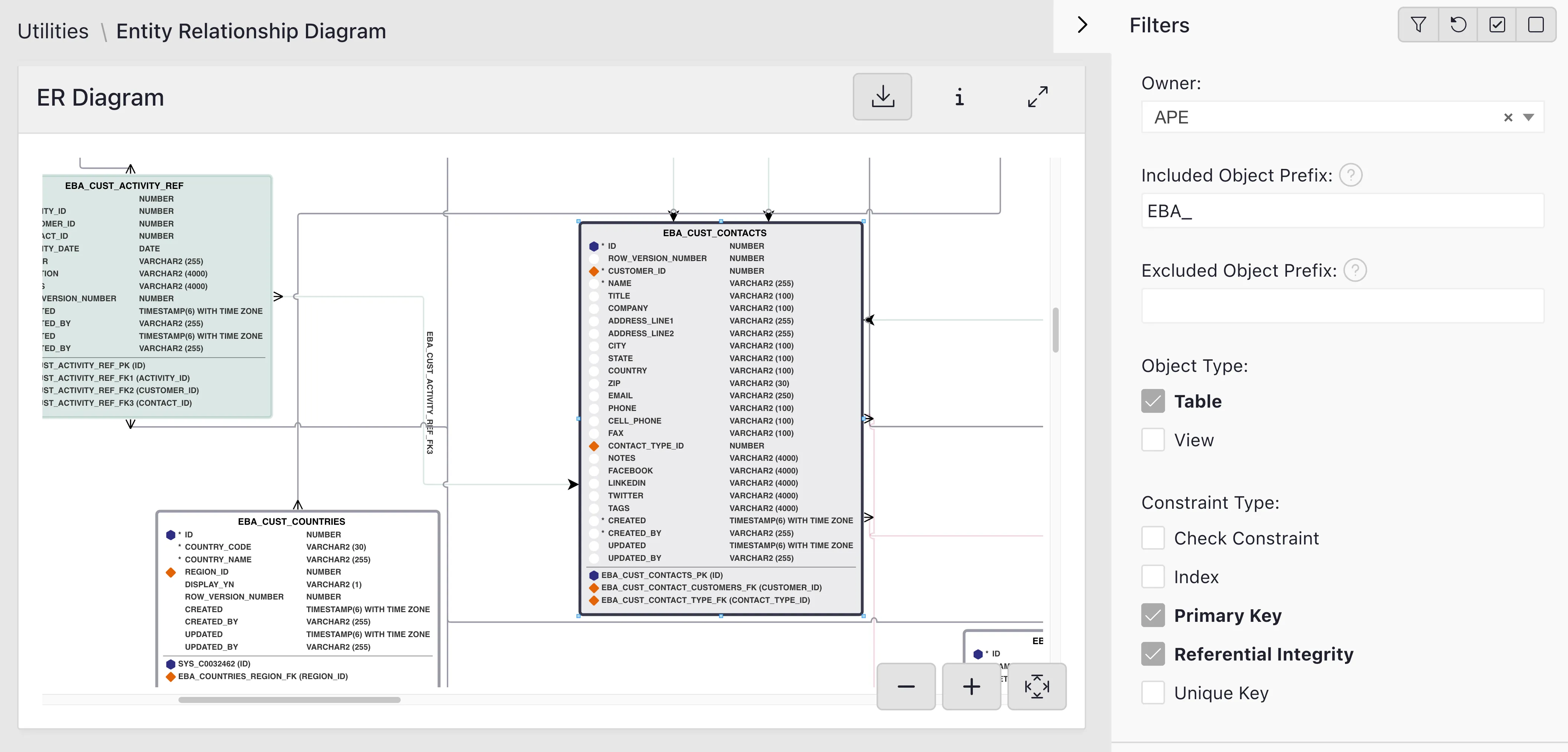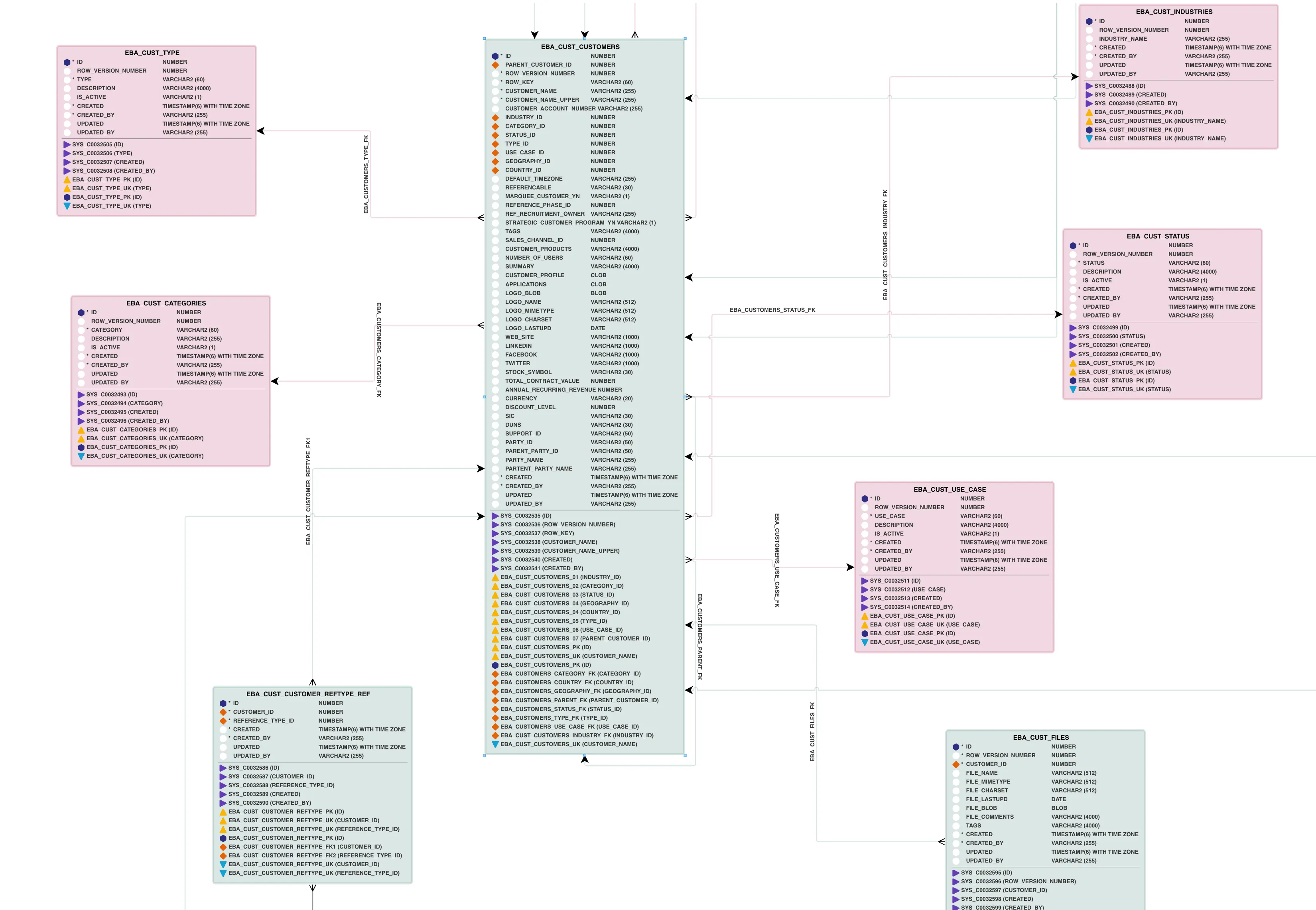ER Diagram
The ER Diagram feature in APEX Project Eye provides an interactive visualization of database relationships in your Oracle APEX applications. This powerful tool helps developers understand data structures, explore table relationships, and make informed decisions about database design by visualizing the entity-relationship model directly within the APEX Project Eye interface.
Key Benefits
Section titled “Key Benefits”- Database Visualization: See your database structure in an intuitive visual format
- Relationship Exploration: Easily identify and understand table relationships
- Design Validation: Verify that your database design meets application requirements
- Knowledge Transfer: Help new team members understand the database architecture
- Documentation: Download visual documentation of database structures
Interactive Diagram
Section titled “Interactive Diagram”Explore your Oracle database structure with an interactive diagram:
- Visual Representation: See tables, views, and their relationships in a clear visual format
- Interactive Elements: Click on tables to see detailed information and explore relationships
- Zoom and Pan: Focus on specific areas of complex database schemas
- Layout Options: Choose different layout algorithms for optimal visualization
- Export Capability: Export diagrams for documentation or presentations

The interactive ER diagram shows tables and their relationships
Table and Column Details
Section titled “Table and Column Details”Access comprehensive information about database objects:
- Table Structure: See column names, data types, and constraints
- Primary Keys: Clearly identify primary key columns
- Foreign Keys: Understand relationships between tables
- Indexes: View indexed columns for performance considerations
- Check Constraints: Information about check constraints on columns
Relationship Analysis
Section titled “Relationship Analysis”Understand how database tables are connected:
- Relationship Types: Distinguish between different types of relationships (one-to-one, one-to-many)
- Direct Relationships: See tables directly connected to the selected table
- Indirect Relationships: Explore multi-level relationships between tables
- Referenced Objects: Identify which tables reference the selected table
- Dependency Chains: Follow chains of dependencies through the database

Explore detailed information about table relationships
Related APE Features
Section titled “Related APE Features”- Documentation Generation: Include ER diagrams in your application documentation
- Object Dependencies: Understand how database objects are used in your applications
- Quality Assurance: Evaluate database design against best practices
- DB and ORDS Dashboard: Monitor database aspects related to your data model